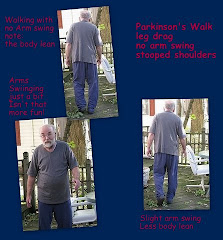 |
| The farm in recent years |
My grandfather loved new technology, he'd been an electrician when he was younger. He enjoyed trying new farming techniques like growing soybeans in the 1940's. I would see him reading magazines like Progressive Farmer every time we visited.
DDT was first discovered in 1874 by an Austrian student who didn't know what it could be used for. In 1936 Paul Molller, a researcher for J. R. Geigy, a Swiss chemical company, was looking for a moth proofing agent and discovered that DDT was a very powerful insecticide. He thought it was not harmful to man. Geigy patented DDT in 1940.
At the outbreak of World War II, J.R. Geigy began to manufacture DDT in vast quantities as a very effective insecticide for use on troops and displaced persons with lice and to fight the mosquitos that carried Malaria since these were very serious wartime problems. It's estimated 5 million lives were saved by DDT during the war. In the United States DDT was controlled by the War Production Board and was not available for civilian use.
When WWII ended in 1945 the US allowed DDT to be used for agricultural and home use. In 1948 Paul Moller won the Nobel Prize in medicine for developing DDT. UN agencies used DDT around the world to fight insect borne disease. In Ohio farmers had to grow as much as possible because of post-war shortages.
With the availability of DDT for agricultural use, soybean production saw tremendous growth by the 1950's. In order for the crop to remain viable, the insects and weeds which plagued it needed to be exterminated. DDT usage peaked in 1959 at 800 million pounds. By 1972 when it was banned only 12 million pounds was being produced and used.
Due to DDT's persistence in the environment for up to 25 years and its life-time persistence in human fat tissue, the agricultural use of DDT and related pesticides have caused and continue to cause the tragic plague of neurological disease from which many of us now suffer.
My great grandfather who lived on a corn & soybean farm died in 1957 of senile dementia. My grandmother suffered from dementia as well. One of my aunts who grew up on the farm and lived there during WWII died of Parkinson's disease in 2007. I was diagnosed with Parkinson's in 2003.
While this doesn't show cause and effect, it is consistent with the theory that inheriting a defective gene can set up some members of a family to be very susceptible to neurological diseases given the right trigger.
February 22, 2011 addendum
NIH Study finds two pesticides associated with Parkinson's disease















